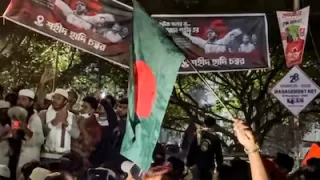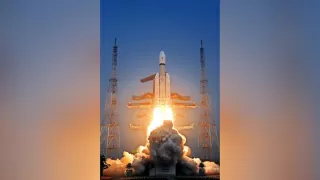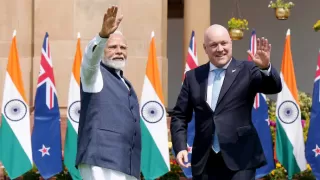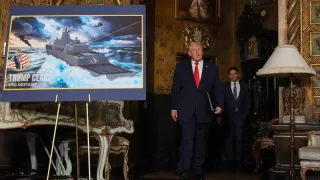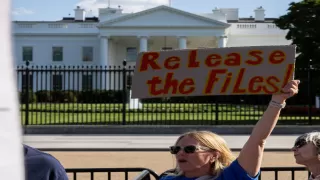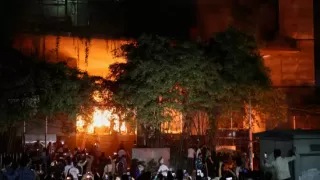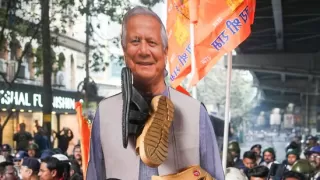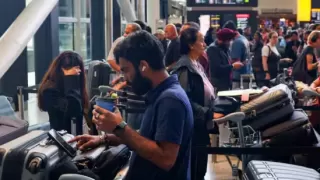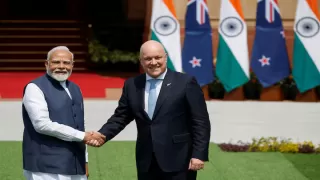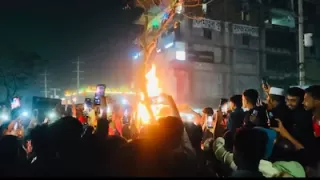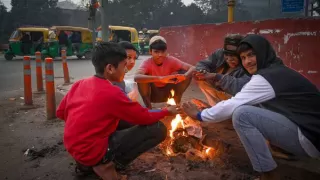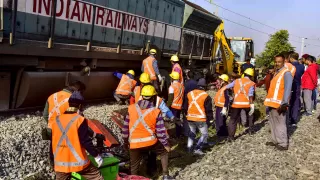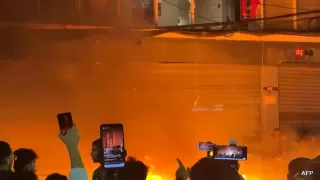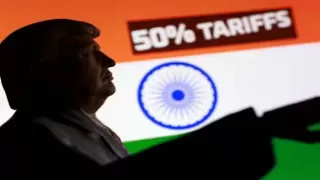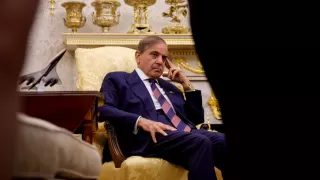Prime Minister Narendra Modi has confirmed that he will attend the upcoming ASEAN summit virtually, effectively ruling out any face-to-face meeting with U.S. President Donald Trump. This decision has sparked debates about India-US relations, the strategic timing of Modi’s engagements, and the implications for India’s foreign policy in Southeast Asia.
The ASEAN summit, scheduled from October 26 to 28 in Kuala Lumpur, Malaysia, is a major diplomatic platform for regional cooperation and multilateral discussions. Modi's choice to participate virtually is notable as he has been a regular attendee in person for nearly a decade, except for the pandemic years and 2022.
Reasons Behind Modi's Virtual Attendance
According to Malaysian Prime Minister Anwar Ibrahim, Modi's decision stems from ongoing Deepavali celebrations in India. Anwar expressed respect for the Prime Minister’s decision and extended greetings to the Indian people for the festival.
Additionally, Modi's schedule includes extensive domestic engagements, bilateral meetings with other countries virtually, and strategic planning for upcoming regional and global events. Officials indicate that attending virtually allows him to manage these commitments efficiently without compromising India’s representation at the summit.
Historical Context of Modi at ASEAN Summits
PM Modi has attended every ASEAN summit in person from 2014 to 2019, highlighting India’s deepening engagement with the 10-member bloc under the Act East policy. During these summits, Modi focused on trade, connectivity, energy cooperation, and regional security initiatives.
The ASEAN summits of 2020 and 2021 were held virtually due to COVID-19 restrictions. Modi’s absence in 2022 was due to prior diplomatic commitments, marking this year as a significant decision in the continuity of India’s physical participation at the forum.
Speculation About Modi-Trump Meeting
Before Modi’s announcement, speculation circulated that he might meet President Donald Trump on the sidelines of the ASEAN summit. Trump had expressed interest in meeting Modi to discuss trade deals, tariffs, and bilateral cooperation.
With Modi opting for virtual participation, the chance of a face-to-face meeting has largely vanished. Analysts note that such an in-person interaction would have provided a platform to accelerate stalled trade negotiations and resolve tariff disputes.
India-US Relations and Trade Implications
India-US relations have been under strain recently due to U.S. tariffs on Indian imports, particularly concerning Russian oil, and stalled trade agreement negotiations. The absence of a physical meeting could slow progress on these discussions, requiring alternative diplomatic channels to keep momentum.
Despite these challenges, Modi and Trump have maintained communication via phone calls and messages, reinforcing the need for continued dialogue. Analysts suggest that India may focus on virtual bilateral meetings to mitigate the impact of missed in-person engagement.
Congress Criticism and Domestic Reactions
The opposition Congress party criticized Modi’s decision to attend virtually. Congress MP Jairam Ramesh commented that Modi might be avoiding a direct encounter with Trump due to sensitive issues surrounding oil imports and trade negotiations.
Political analysts observe that domestic political considerations often influence international diplomacy. Modi’s careful scheduling reflects a balance between maintaining India’s image globally while managing sensitive domestic expectations.
ASEAN-India Strategic Partnership
India has cultivated strong ties with ASEAN under the Act East policy, focusing on trade, connectivity, defense cooperation, and energy partnerships. Modi’s virtual attendance aims to maintain these commitments while highlighting India’s readiness to engage with ASEAN countries even without physical presence.
The summit will cover topics like regional security, economic integration, digital economy, AI cooperation, and climate change. India’s continued participation demonstrates its intent to remain a key partner in Southeast Asia’s strategic and economic frameworks.
Global Diplomacy and Virtual Engagement
While physical presence at summits has traditional value, virtual participation has become increasingly accepted post-pandemic. Leaders can engage in bilateral talks, deliver speeches, and negotiate agreements effectively through digital platforms.
For Modi, this approach ensures India maintains visibility at ASEAN while managing other diplomatic and domestic responsibilities. It also underscores a pragmatic adaptation to modern diplomacy without compromising on strategic objectives.
Implications for Future Meetings with Trump
With the ASEAN summit now unlikely to provide an opportunity for Modi to meet Trump in person, both countries will need to explore alternative venues or digital platforms to continue trade and diplomatic discussions. Analysts suggest that bilateral trade talks could be scheduled virtually or during other upcoming multilateral summits.
The missed face-to-face interaction highlights the delicate balancing act in India-US relations, requiring careful timing, messaging, and agenda-setting to avoid misinterpretations on either side.
Looking Ahead
As the ASEAN summit proceeds, Modi’s virtual participation will be closely monitored for strategic messaging, bilateral engagements, and the depth of discussions with other regional leaders. The summit is expected to reinforce India’s Act East policy while navigating complex ties with major powers like the United States.
Overall, Modi’s decision reflects a combination of domestic priorities, festival commitments, and strategic calculations. Virtual diplomacy is becoming a standard tool in India’s foreign policy toolkit, allowing the country to maintain influence and engagement without always being physically present.
Conclusion
PM Modi’s virtual attendance at the ASEAN summit is a calculated move balancing domestic obligations, regional diplomacy, and India-US relations. While the opportunity for an in-person meeting with Trump is lost this year, India continues to assert its presence on the global stage through virtual platforms, ensuring its strategic interests and diplomatic commitments are upheld.
Also Read: India Invites Canada’s PM Mark Carney for Trade Talks




